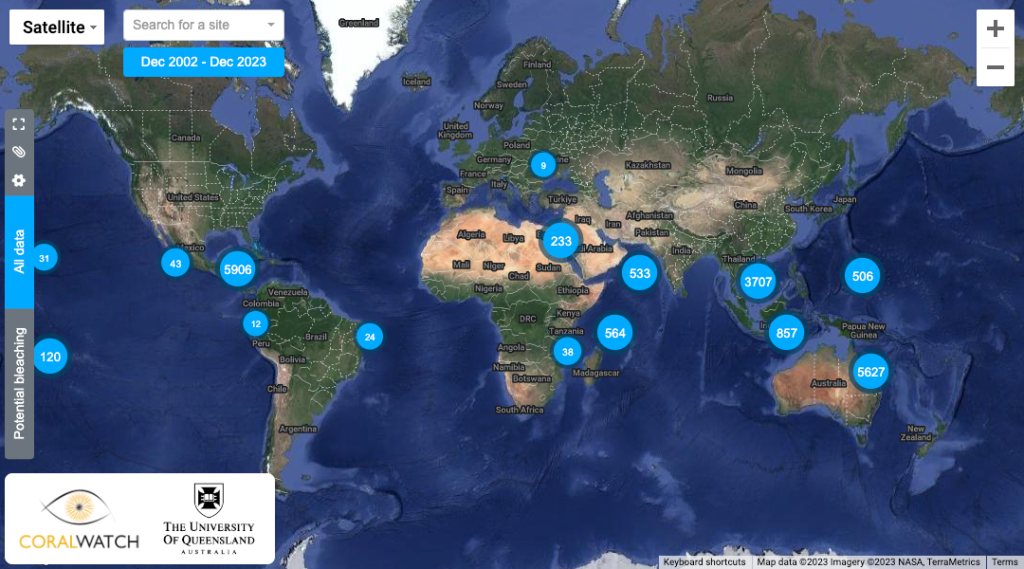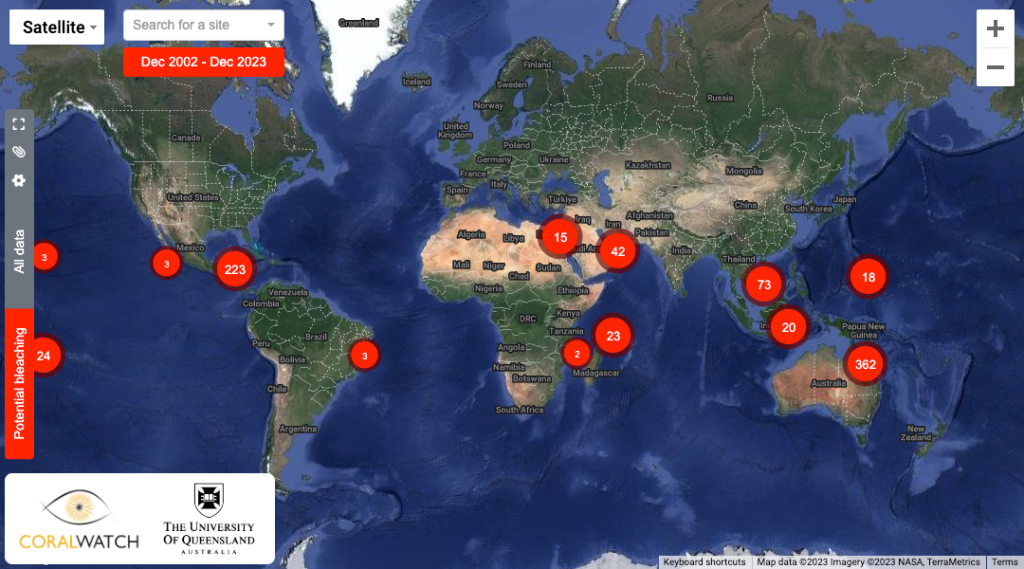In addition to displaying graphs on average colour scores and coral types, this new interactive data map provides instant feedback regarding potential coral bleaching areas.
You can select date ranges and search for reefs within the platform. The ‘All data’ map view displays coral reefs globally and indicates the numbers of surveys in an area.
You can view individual reef sites if you zoom further. Click on the markers, to view details about the surveys conducted in that area.
The ‘Potential Bleaching’ map view selects those coral reefs globally that present potential bleaching occurring, and they are marked with a red marker. CoralWatch selection criteria is based on surveys that include at least 15 hard corals of which 30% has an average score of <2.1.
Call for data – This is where YOU can help!
Considering the potential higher than average ocean temperatures that 2023/24 may present due to being an El Niño year, there is an increased risk of coral bleaching this year, which have already occurred in the Caribbean. In response, CoralWatch has launched this map to provide better feedback on locations and timing of bleaching events. This tool is critical for conservation, education and management purposes.
CoralWatch plays a crucial role in collecting data on coral health and this is where you can help. This call for data seeks real-time data on coral health to better understand and anticipate on potential bleaching events.
We would like to invite citizen scientists, researchers, and enthusiastic individuals to share their data related on the CoralWatch database. We need to continue to collect data systematically, before, during and after the event.
Your data matters because it can provide early detection, hence proactive conservation efforts, as well as targeted strategies to protect our reefs by providing a contribution to the scientific understanding of coral health.
What to do if you experience bleaching
1. Conduct additional CoralWatch surveys: We encourage you to conduct additional CoralWatch surveys in the affected areas to confirm the occurrence of a potential bleaching event.
2. Spread the word: Inspire others to join in monitoring reefs. Share the alert on social media platforms such as CoralWatch community page on Facebook to encourage a collective effort.
3. Contact your local reef management group: Collaborating with local authorities can aid comprehensive investigation and response.
Download data
All data within the CoralWatch database from 80 countries is publicly available. Researchers, educators, conservationists, and individuals can freely download this data for teaching, research, and management purposes.
Submitting data: Enter data here
Visualizing data on interactive data map: Click here



